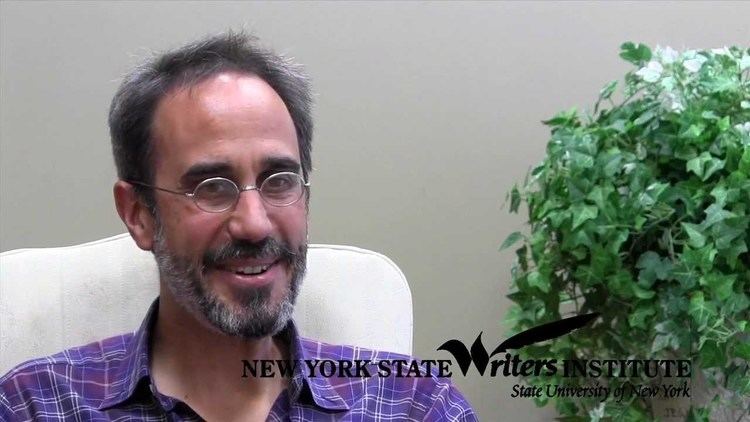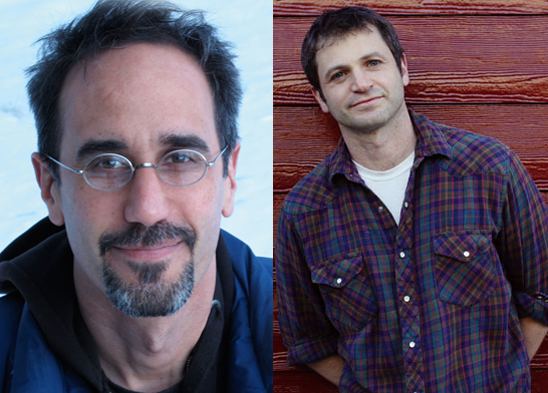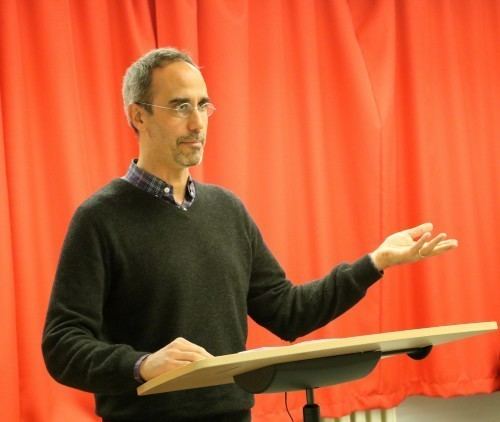Name Paul LaFarge | Role Novelist | |
 | ||
Books Haussmann, or, The distinction People also search for Paul Lafargue, Yves Guyot, George II of Great Britain | ||
"The Night Ocean": Paul LaFarge, Nic Wassell
Paul B. La Farge is an American novelist, essayist and academic. As of 2017, he has published five novels: The Artist of the Missing (1999), Haussmann, or the Distinction (2001), The Facts of Winter (2005), Luminous Airplanes (2011) and The Night Ocean (2017), all of which, particularly Haussmann, have earned positive critical attention. His essays and reviews have been published in outlets such as The Village Voice, Harper's, and The New Yorker.
Contents

Biography

A native of New York City, La Farge graduated from Yale University and has taught writing at Wesleyan University on and off since 2002. From 2009 to 2010, he was a Visiting Professor of English at Wesleyan. He has taught writing at Columbia. He was the 2005 winner of the fourth annual Bard Fiction Prize bestowed by Bard College, where he is on the MFA faculty. He is a recipient of a Guggenheim Fellowship and has been chosen as artist-in-residence at artists' colonies MacDowell and Yaddo. From 2016 to 2017, La Farge was the Picador Guest Professor for Literature at the University of Leipzig's Institute for American Studies in Leipzig, Germany.
Novels

La Farge's first novel, The Artist of the Missing, was published by Farrar, Straus & Giroux in May 1999, and illustrated with surrealist images by cubist artist Stephen Alcorn. The novel takes place in an anonymous, modern-day city in which people go missing on a regular basis. Frank, the titular character, paints portraits of the missing, among whom are his parents, his brother James and, eventually, even his romantic interest, enigmatic police photographer Prudence, whose job it was to take pictures of corpses. Reviewers compared the debut work to those of Gabriel García Márquez, Jorge Luis Borges and categorized him among "literary wizards" and "fantasists".

Two years later, his second novel, Haussmann, or the Distinction (Farrar, Straus & Giroux, September 2001) purports to peel layers from the mysterious private life of Baron Georges Eugène Haussmann (1809–1891), the flawed genius city planner who, in the 1860s, masterminded the carving up of Parisian streets into modern boulevards, of which the Champs-Élysées is the most renowned example. In his review for The New York Times, Edmund White called it "imaginative — indeed, a hallucinatory — approach, one that ends up by transforming his supremely practical subject (for Haussmann was above all a systematic worker) into an elegant and sometimes grotesque fairy-tale hero". The novel's insistently presented premise (that the author, Paul La Farge, is merely the translator of an obscure French-language text by a forgotten minimalist metaphysician named Paul Poissel) extended to the "reproduction", in the opening pages of the book, of the title page of the "posthumously" published in 1922, "first (and only) French edition of Haussmann, or the Distinction", and the inclusion, in the afterword, of daguerreotypes, the first of which depicts a female whom the caption identifies as "Yvonne Dutronc, ca. 1872", a character which does not even appear in the main narrative, but is mentioned only in the afterword, in La Farge's own (fictional) footnote and (apparently) on the dedication page—"for Y." The second image purports to be that of "Paul Poissel in 1880" and both are described as having been "found" by the afterword's veritable author, Paul La Farge, himself, in the archives of the French national library, Bibliothèque nationale. An elaborate website, The long sad life of Paul Poissel, which expands the conceit, assigns June 4, 1848–November 17, 1921 as Poissel's dates, along with myriad details about his life and times. The entire website functions as satire, including, at one point, the accusation that the American author "masquerading" under the French name "La Farge" had the audacity to put his own name on front cover, as if he was the actual author. Other parts of the website include quotations, such as an excerpt from a 1934 letter Walter Benjamin "wrote" to Gershom Scholem, in which he makes a deeply complicated observation about Poissel, and also MP3 files featuring early archival "recordings" of Poissel's voice, reciting (in French) portions from his own "works". Haussmann, as a whole, also serves to display the depth of La Farge's scholarship into the period of the Second Empire as well as his playfulness with language (the putative front page of the 1922 work indicates that it was issued "à Paris, chez les Éditions de cire perdu", or by "the Paris Publishing House of Lost-Wax Casting").
The "Poissel" name extends to and, to a degree, arrogates La Farge's third book, The Facts of Winter (McSweeney's, June 2005) which, on its front cover, states, "by Paul Poissel, translated by Paul La Farge". It is also set in Paris, although the year is now 1881, a decade into the Third Republic. The reader is privy to "a series of short dreams, each dreamed by people in and around Paris, which is to say that it is a fictional account of the imaginary lives of people who may or may not be real". Again, La Farge's command of French is featured, as the dream accounts come to the reader in both French and English, and the descriptive language is hauntingly poetic. The scholarly "afterword" strives to elucidate further the work and thought of the "unjustly neglected" author of this tome, Paul Poissel.
His book Luminous Airplanes is the humorous story of a young man with two mothers who learns a family secret while cleaning out his grandfather's house in upstate New York. The book was published in 2011 by Farrar, Straus and Giroux and features immersive text. A description of the book appears here. It was listed as one of "the Most Criminally Overlooked Books of 2011" by Emily Temple in Flavorwire.
In March 2017, La Farge publishedThe Night Ocean, a novel about a doctor investigating the relationship between horror writer H.P. Lovecraft and a teenage boy. The novel, published by Penguin Press, was listed as one of "28 books to read in 2017" by Jeva Lange in The Week.
